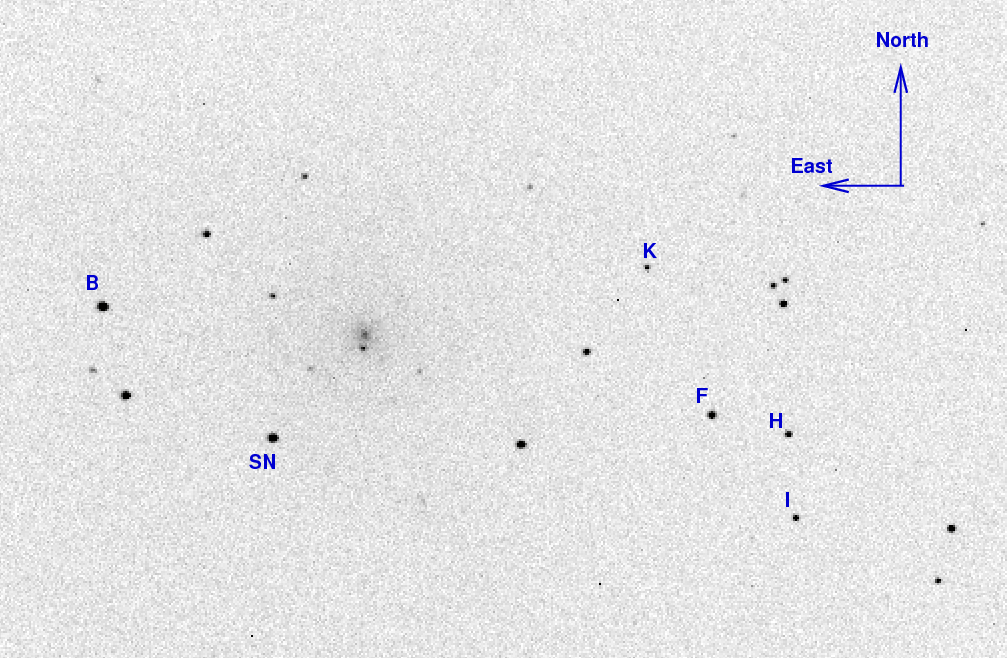
On the night of July 30/31, 2013, I observed SN 2013ej in M74.
The main setup was:
Notes from the night
SN 2013ej is a Type II supernova in the relatively nearby galaxy M74. It was discovered by the KAIT group some time (a week?) before maximum light. Here's a chart showing the galaxy, the SN, and some reference stars:

The reference stars marked above have magnitudes in AAVSO chart 12459CA, as follows:
letter B sigB V sigV R sigR I sigI B 13.012 0.019 12.510 0.019 12.154 0.019 11.834 0.019 F 13.848 0.026 13.065 0.022 12.622 0.025 12.152 0.027 H 14.338 0.029 13.692 0.024 13.329 0.029 12.964 0.030 I 14.832 0.027 13.912 0.023 13.416 0.026 12.939 0.030 K 15.192 0.034 14.613 0.027 14.275 0.034 13.915 0.036
I took 30-second guided images -- expect in B-band: the guide star was too faint for the guider to track. I took 5 images in VRI, 20 images in B. Afterwards, I discarded those images which were trailed or showed a "jump" in the tracking.
Using aperture photometry with a radius of 4 pixels (radius of 7.4 arcsec), I measured the instrumental magnitudes of a number of reference stars and the target. Following the procedures outlined by Kent Honeycutt's article on inhomogeneous ensemble photometry, I used all stars available in each image to define a reference frame, and measured each star against this frame. I used the AAVSO magnitudes, plus color terms which I am currently revising -- so please treat these results as preliminary to convert the ensemble instrumental magnitudes to the standard Johnson-Cousins BVRI scale.
Results from this morning are:
filter mag mag_uncert Julian Date B = 12.689 +/- 0.019 (ens 0.015 zp 0.012) 2456504.74164 V = 12.614 +/- 0.019 (ens 0.015 zp 0.012) 2456504.73380 R = 12.507 +/- 0.027 (ens 0.015 zp 0.022) 2456504.73075 I = 12.434 +/- 0.054 (ens 0.019 zp 0.051) 2456504.75007
The uncertainties here are roughly equally split between the instrumental magnitudes, and transforming the instrumental magnitudes to the standard scale.
Last modified 08/02/2013 by MWR.